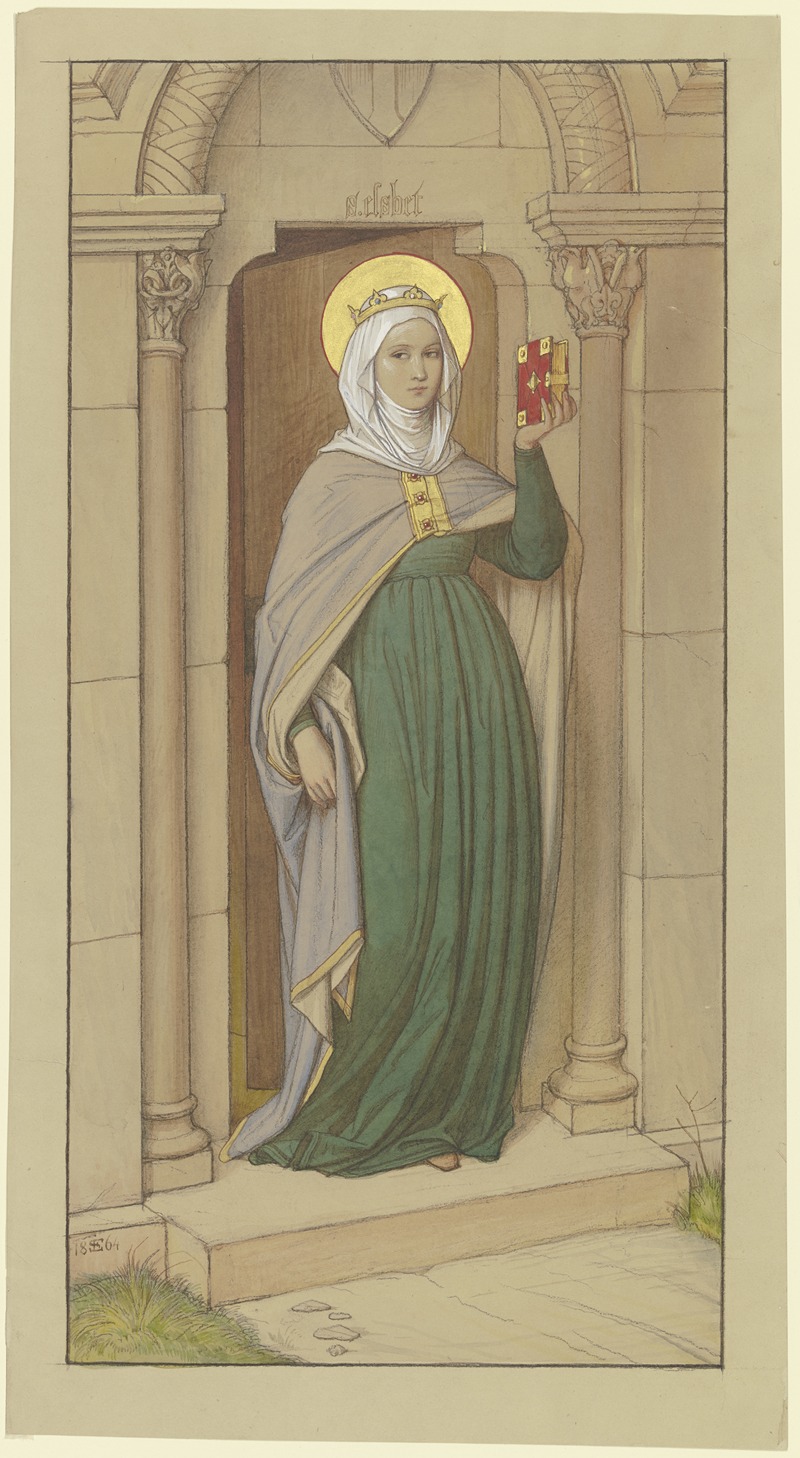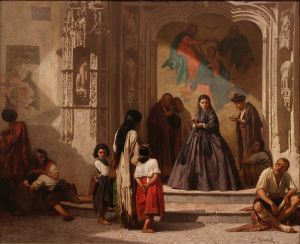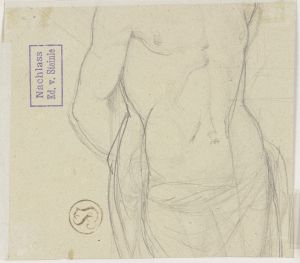
Saint Elisabeth
A hand-painted replica of Eduard von Steinle’s masterpiece Saint Elisabeth, meticulously crafted by professional artists to capture the true essence of the original. Each piece is created with museum-quality canvas and rare mineral pigments, carefully painted by experienced artists with delicate brushstrokes and rich, layered colors to perfectly recreate the texture of the original artwork. Unlike machine-printed reproductions, this hand-painted version brings the painting to life, infused with the artist’s emotions and skill in every stroke. Whether for personal collection or home decoration, it instantly elevates the artistic atmosphere of any space.
"Saint Elisabeth" is a painting by the German-Austrian artist Eduard von Steinle, who was an influential figure in the Nazarene movement, a group of artists in the 19th century who sought to revive honesty and spirituality in Christian art. Steinle was born on July 2, 1810, in Vienna and died on September 19, 1886, in Frankfurt am Main. His works are known for their detailed craftsmanship and deep religious sentiment.
The painting "Saint Elisabeth" depicts Saint Elisabeth of Hungary, also known as Saint Elisabeth of Thuringia, who was a princess and a highly venerated Catholic saint. Born in 1207, Elisabeth was the daughter of King Andrew II of Hungary and Gertrude of Merania. She is known for her piety, charity, and dedication to the poor and sick, which led to her canonization by Pope Gregory IX in 1235, just four years after her death.
Eduard von Steinle's portrayal of Saint Elisabeth captures her in a moment of serene devotion. The painting is characterized by its meticulous attention to detail and the use of soft, harmonious colors, which are hallmarks of Steinle's style. The composition typically features Elisabeth in a humble pose, often with symbols of her charity work, such as bread or roses, which are associated with the miracle of the roses. According to legend, when caught by her husband distributing bread to the poor, the bread in her apron miraculously turned into roses, thus protecting her charitable activities.
Steinle's depiction of Saint Elisabeth reflects the artist's deep religious convictions and his commitment to the ideals of the Nazarene movement. The Nazarenes aimed to return to the purity and spirituality of early Christian and medieval art, and Steinle's work is a testament to this goal. His paintings often feature religious themes and are imbued with a sense of reverence and devotion.
"Saint Elisabeth" is part of Steinle's broader body of work that includes numerous religious paintings, frescoes, and illustrations. His contributions to art were recognized during his lifetime, and he held a professorship at the Städelschule in Frankfurt, where he influenced a generation of artists.
The painting is housed in a collection that reflects Steinle's importance in the 19th-century art world, although specific details about its current location or the collection it belongs to are not readily available. Steinle's works, including "Saint Elisabeth," continue to be appreciated for their artistic and spiritual qualities, and they remain significant examples of the Nazarene movement's impact on religious art.
In summary, Eduard von Steinle's "Saint Elisabeth" is a notable example of 19th-century religious art, reflecting the artist's dedication to spiritual themes and the ideals of the Nazarene movement. The painting captures the essence of Saint Elisabeth of Hungary's piety and charity, rendered with the meticulous detail and reverence characteristic of Steinle's work.


















